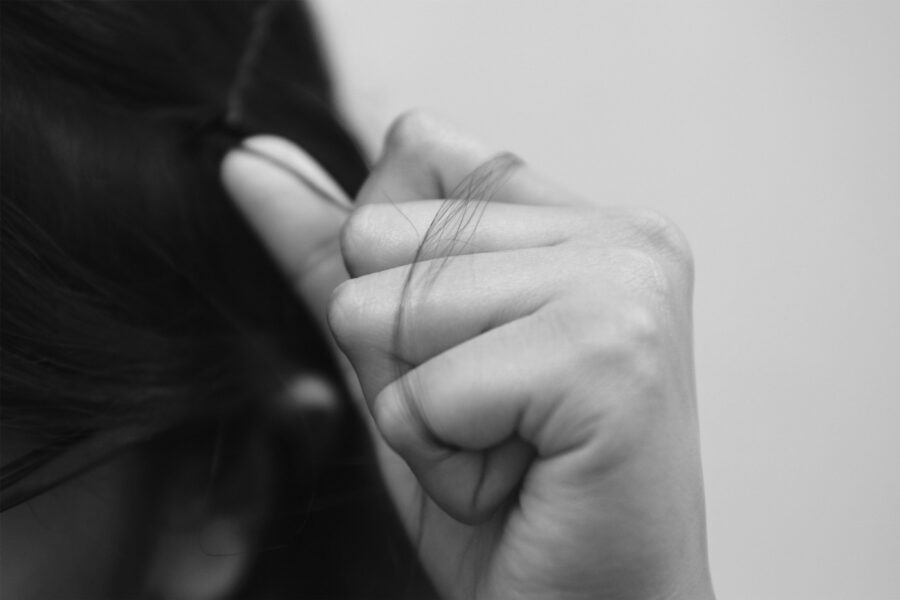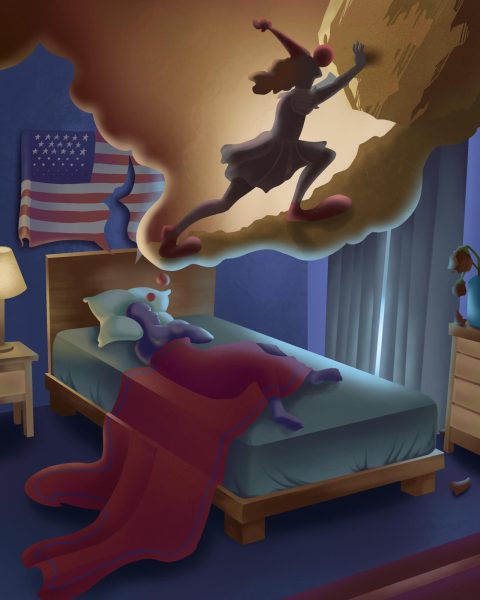I’m so anxious I could pull my hair out
For people with trichotillomania, pulling their hair out is more than just a habit, it’s a disorder
Photos by Adam Ernesto Fuentes
She reached behind her ears and twisted a single strand of hair around her finger. After fidgeting with it for a while, she decided it was worthy and pulled. She then put the strand in her mouth and slid it through her lips over and over again before throwing it away. And then she did it again.
I have watched this behavior for as long as I can remember. She pulls and she pulls, and she fidgets and plays. For decades, this has been a part of who she is. I would not understand the severity of my mother’s ritual until one day when I was 14 and began to play with her hair. I noticed a huge bald spot above each of her ears. It was something I never expected to see, and she looked so ashamed.
My mother is one of many who suffer from Trichotillomania, a disorder that causes a person to pull out their own hair from the scalp, eyebrows, eyelashes, or body. These urges are almost impossible to resist and can have more than just physical effects. Feelings of shame, guilt, and loneliness are common among people who suffer from Trichotillomania, also known as Trich, a disorder that can be life consuming.
To add to the emotional distress of this disorder is that very little is actually known about it. The Trichotillomania Learning Center, Trich.org, reports that an exact cause for Trichotillomania has yet to be discovered. This lack of awareness, and the act in itself, has made the disorder a taboo subject, causing many who suffer from it to stay in hiding in fear that they may be viewed differently. Many Trich sufferers may go years before telling anyone about their disorder or seeking help.
This was the case for Anne McIntire, a 19-year-old student at St. Joseph’s College who has had Trich since she was 12. Up until last year, she refused to speak about her disorder to even the closest people in her life. The shame and embarrassment caused her to remain silent about her struggle. She felt alone and was unaware that there were others who felt her same pain. But McIntire is not alone. According to the Trichotillomania Learning Center, about 2–4 percent of the U.S. population suffers from some form of hair pulling.
McIntire recalls her first time pulling as an innocent experience.
“I was watching a TV show where a character made a wish on an eyelash and it came true, so I wanted to try. The next thing I knew, most of my eyelashes were gone and it just got worse from there.”
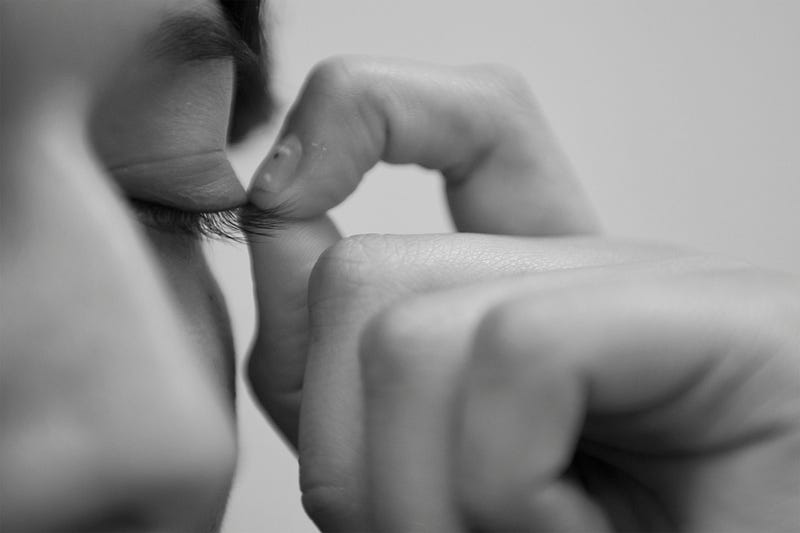
McIntire constantly worries about people noticing her missing eyelashes. This has caused a strain on many of her relationships.
Sometimes, the people who understand least are the people closest to the person who suffers from Trich. I can recall constantly reprimanding my mother every time I would see her reach for a strand of hair from behind her ear. This only hurt my mother and caused her to want to pull more. I, like many others, found it difficult to understand why she simply couldn’t stop. McIntire’s family was also uneducated about how to support someone with Trich.
“It took a really long time for me to open up to my parents and friends because I was so embarrassed and ashamed. I avoided talking to my parents.”
McIntire finally Googled her condition, highlighted the information, and gave it to her mother.
“That was how I tried to explain it to her. The first time I told my best friend I was crying and made a huge deal about it. She smiled and said, ‘It’s not a big deal; it’s not like you’re addicted to meth.’ She didn’t find it that big a deal and that felt great.”
Although her best friend was supportive, her parents have struggled to understand how serious her disorder is and how it has consumed her life.
“The worst thing anyone has ever said to me about my disorder was from my dad. My dad is great and I love him and he loves me but he said something to me that I will never forget.”
After having a heated discussion with her father about her getting a tattoo, McIntire’s father said some harsh words about her disorder.
“My dad snapped at me and said, “‘How about you grow your eyelashes out instead? I have never been more crushed by anything he has ever said to me. I instantly started crying my eyes out because how could he say that to me? How could he think I have a choice in pulling out my eyelashes? How could he think that this is something that I could just stop doing? I forgave him for the comment but it felt like I got stabbed in the heart when he said it.”
Apart from her parents not understanding, McIntire worries about the rest of the world noticing her secret. What makes Trichotillomania so difficult to live with are the social implications that come along with it. Trich can cause people to avoid any and all social environments, making it hard for a person to function as a productive member of society.
“Socially, my pulling has affected me being able to look people in the eyes or letting people get too close to my face for fear that they will notice that I don’t have any eyelashes. Every day I wake up with this shame and embarrassment even though I am getting help and trying to stop. I have hated myself for years because of my Trich.”
McIntire has begun therapy sessions to help control her pulling and deal with stresses that could potentially become triggers. She has learned more about how to deal with her Trich, and this past summer went four weeks without pulling. McIntire, like others with Trich, hope to raise awareness about this disorder.
“I would want someone who has never heard of Trich to understand that I don’t enjoy pulling out my eyelashes and I can’t just stop like so many people assume. I have a disorder that is consuming my life. I want people to know that this is a real disorder and should be treated as such. I want Trich awareness to become better known so that when teens begin pulling, they know they are not alone and they can get help. There is nothing to be ashamed of about having Trich.”
Like McIntire, Lempi Miller, 41, has shared her own struggles with Trich to help others. Miller started pulling when she was just nine. According to Trich.org, pulling usually begins between the ages of nine and thirteen. However, there have been cases of pulling in infancy. Trich in these cases usually disappears as the child grows. However, every case is different. In Miller’s case, she did not outgrow her disorder.
Miller first began pulling her hair after she examined a strand under a microscope.
“After that I started pulling out my hair and looking at the root. Then I’ll strip the hair off with my teeth, and eat it. Finally, I’ll pull the hair through my fingernails, so the hair curls up like holiday ribbon. It’s been that way since third grade, and I’ve done this ritual millions of times. I pull from the crown of my head primarily, but also my widow’s peak, and if I’m alone, any available body hair— armpits, leg hair, pubic hair, or the fuzz on my face if I have a mirror and tweezers handy. There’s no ritual with a hair pulled from somewhere besides my crown.”
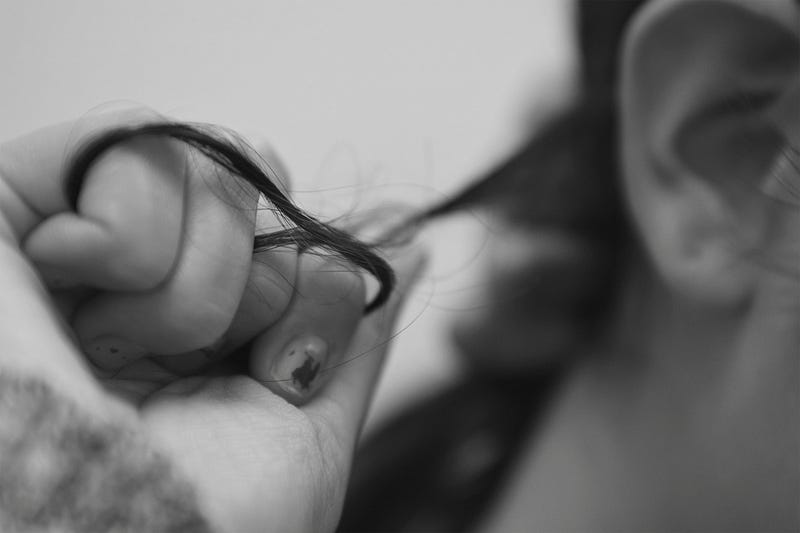
Last month, MTV.com reported that an estimated 13 percent of Trich sufferers can compulsively eat their own hair. The act of eating a strand of hair, or the root of hair, like Miller, can cause serious health problems. Because hair cannot be digested properly, it can accumulate in the stomach as a wad of hair. This causes extreme pain and may require surgery to be removed. Fortunately, Miller’s hair eating has not caused health issues.
Miller describes her pulling experiences as soothing and relaxing. Because of this, she tends to pull more when she is stressed. At times she doesn’t even realize when she’s doing it.
“I’ll look down on the floor and my desk after a long day at work and it will be covered in hair everywhere. After that I feel slight regret and mild self-loathing at my lack of self-control.”
When Miller first began pulling, she did it every day. Soon, bald spots covered her head and her parents took her to the doctor. Her doctor put her on prenatal pills because he attributed her behavior to a mineral deficiency. It was then that she realized her hair pulling was socially unacceptable and began to pull less frequently. She was so careful not to make bald spots. Her parents believed she had stopped all together.
Unlike McIntire, Miller says that Trich hasn’t had a significant impact on her social life severely. She grew up with a tight knit group of friends that were very accepting so her friends never mentioned it or bullied her about it. She considers herself very lucky. However, when she was in junior high school, she moved to a new state where she was picked on for other reasons that caused her to pull again and severely.
Throughout the years, Miller has tried to stop pulling and has had varied success. She started smoking in college and noticed her Trich became less severe. Then in her 30s, she quit smoking and started ultra running, a type of running in which the participant runs for several miles at a time. During that time, she stopped pulling completely for four years. Not a single hair. It wasn’t until she gave birth to her first child that she began pulling again.
“I started doing it again. A lot. And chewing my fingernails too. And picking my skin. It was as if all the years of moderately controlling it went out the window. For the first time, I felt actual despair over my disease, because I was wildly compulsive and I couldn’t reign it in.”
She did what many others with Trich do. She cut her hair short. Having short or buzzed hair makes it hard to get a grasp on a strand of hair. Thus, pulling the hair becomes more difficult.
The need to cover missing hair due to Trich has become greater over the years for all who suffer from the disorder and salons have responded. There are salons that specialize in full head hair extensions sewn into the hair that make it impossible to pull the roots of hair. At the same time, the extensions allow the person’s natural hair to grow. Wigs, hats, scarves, and fake eyelashes can also help trich sufferers. But these are just temporary solutions. Support groups, therapy, and certain drugs are sometimes helpful. For Miller, joining a support group and hearing other sufferer’s stories with Trich resulted in her noticing a pattern.
“The other members in the page had such hard stories. Lots of them were victims of sexual abuse. It seemed that there were two distinct camps of pullers: Those who survived trauma and those who were from a family of pickers.”
Miller found it hard to put herself in one of these categories. She had both a violent upbringing and a family with a lot of mental illness. Trich.org states that there is a wide range of theories for the cause of Trichotillomania. Some experts attribute it to a genetic disposition and others believe traumatic triggers are the cause. However this doesn’t exclude people who have not suffered from trauma. Last month, MTV.com reported that even actress Olivia Munn suffers from Trichotillomania. “I don’t bite my nails, but I rip my eyelashes,” Munn, 32, told the New York Daily News in 2012. “It doesn’t hurt, but it’s really annoying. Every time I run out of the house, I have to stop and pick up a whole set of fake eyelashes.”
It can affect anyone. In adolescence, it affects both girls and boys equally. However, with adults it is more prominent in women than men. Some researchers believe this might be because men are less likely to open up about pyscological problems than women are.
Although it is classified as an impulse control disorder, there are others who believe this classification is incorrect. Trich has been compared to a tic disorder because of two characteristics. The first being that there is an urge that causes discomfort, and the second is that once the behavior is done, that urge is satisfied and a sense of relief is felt. Others believe it is more of an Obsessive Compulsive Disorder because it is a repetitive motion.
The Mayo Clinic reports that like many complex disorders, trichotillomania probably results from a combination of genetic and environmental factors. Also, abnormalities in the natural brain chemicals serotonin and dopamine may play a role in trichotillomania.
Miller believes the lack of medical information is one of the main components that makes living with Trich so difficult. She recalled an incident in which she experienced the stigma surrounding Trich in the medical field. It happened while she was at the house of one of her friend’s brothers who is a health professional. She noticed a thick book on one of his shelves that was about Trichotillomania.
“It must have 300 or 500 pages. I asked “ What’s in that book? and he said “Don’t get me started. Those people are the most fucked up. You can’t help them. They’re the craziest.” My friend, who has known my secret for years and I laughed, and my friend put his hand on my shoulder and said, ‘You’re the sanest crazy person I’ve ever met.’”
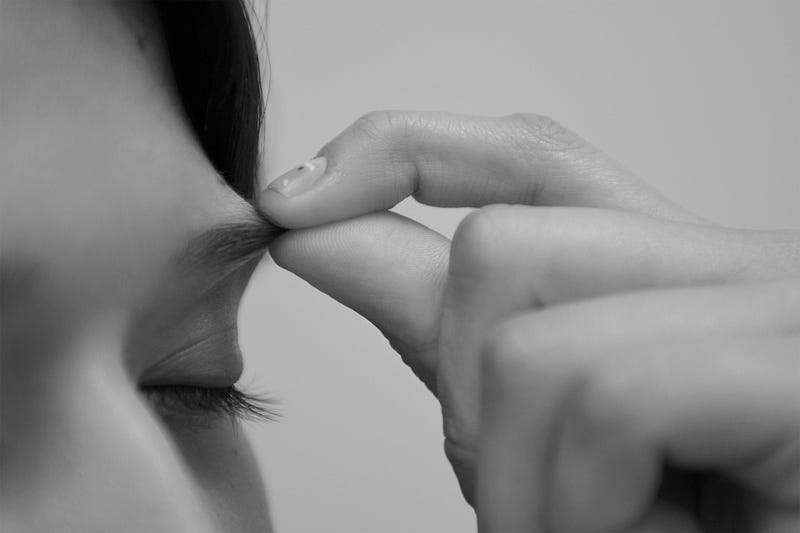
Miller used this experience to speak on her disorder more openly to her friend. She is not ashamed of her disorder but bothered by the labels that come with it. While she does not feel shame, she does feel embarrassed about not being able to control herself and the physical repercussions of Trich. She has a tiny bald spot that will never grow hair again. The other places where she’s compulsively pulled have grown back in black and white.
At the moment, there is no known cure for Trichotillomania. Miller is not optimistic about ever being Trich free. She believes she will always pull but in different stages of severity. Because there is no cure, Miller has found different ways to cope with her disorder and make it bearable. One of the things she does is talk about her disorder openly; something others with Trich find very hard to do.
“At work people ask me why I’m wearing a hat and I tell them that I need to do it to keep from pulling out my hair when I get stressed out.”
“Once someone said ‘TMI!’ and I said, “Would you say ‘TMI’ to someone with cancer?” Because this is a disease, and I think so many people who have it are ashamed about it. I talk about it openly to reduce the stigma for my fellow sufferers.”
Another thing Miller does to cope is post about her struggles on social media. This is how she learned that many people in her family have the same disorder. This helped her have a better understanding of why she has Trich. Last, Miller tries to gain control of her disorder.
“I found that the supplement N Acetyl Cysteine (NAC) had helped some people. I started taking it and it does help me decelerate my behavior. I let myself pull out one hair a day. I tell myself this is the only hair I’m allowed to pull. That usually works.”
Although there is no FDA approved drug for Trich, many with it try antidepressants to help with the underlying effects. Others try therapy to help deal with stress triggers that can cause pulling.
A form of behavioral therapy can also help reign in one’s control over their pulling. Some find it useful to hold the hand they prefer for pulling in a fist. Others try having a constant distraction.
My mother went through a period time in which she always had a lollipop on hand. If she felt an urge to pull she would suck on the lollipop instead. Unfortunately, this only kept my mother distracted for so long. She recently began seeking help for her Trich.
Some sufferers of Trich may struggle with the disorder for the rest of their lives, but there many cases of people who had Trich and are now pull-free.
Those who suffer of Trichotillomania ask for one thing: to not be judged for something they can’t control. This disorder is much more than just a bad “habit.”
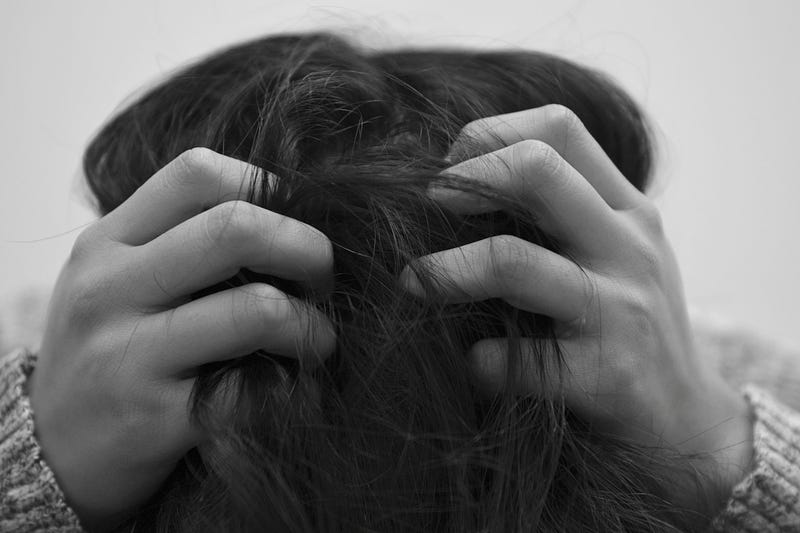
Substance is a publication of the Mt. San Antonio College Journalism Program. The program recently moved its newsroom over to Medium as part of a one-year experiment. Read about it here.

